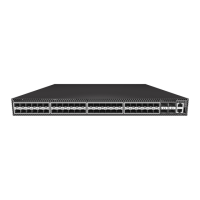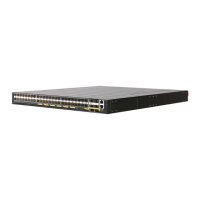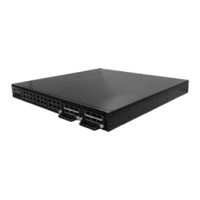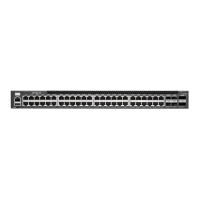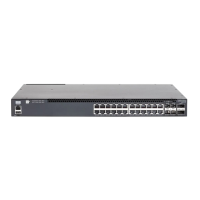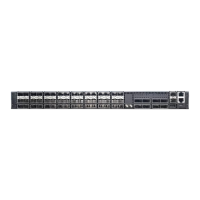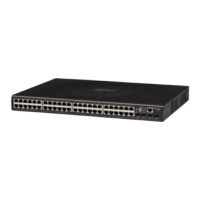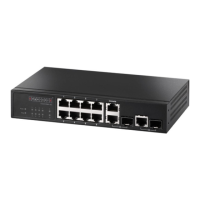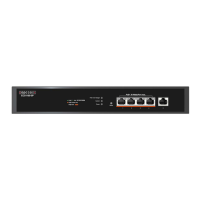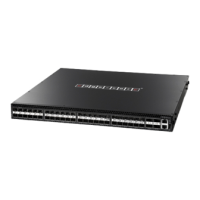Chapter 27
| IP Interface Commands
IPv6 Interface
– 778 –
ipv6 neighbor This command configures a static entry in the IPv6 neighbor discovery cache. Use
the no form to remove a static entry from the cache.
Syntax
ipv6 neighbor ipv6-address vlan vlan-id hardware-address
no ipv6 mtu
ipv6-address - The IPv6 address of a neighbor device that can be reached
through one of the network interfaces configured on this switch. You can
specify either a link-local or global unicast address formatted according to
RFC 2373 “IPv6 Addressing Architecture,” using 8 colon-separated 16-bit
hexadecimal values. One double colon may be used in the address to
indicate the appropriate number of zeros required to fill the undefined
fields.
vlan-id - VLAN ID (Range: 1-4094)
hardware-address - The 48-bit MAC layer address for the neighbor device.
This address must be formatted as six hexadecimal pairs separated by
hyphens.
Default Setting
None
Command Mode
Global Configuration
Command Usage
◆ Address Resolution Protocol (ARP) has been replaced in IPv6 with the Neighbor
Discovery Protocol (NDP). The ipv6 neighbor command is similar to the mac-
address-table static command that is implemented using ARP.
◆ Static entries can only be configured on an IPv6-enabled interface.
◆ The switch does not determine whether a static entry is reachable before
placing it in the IPv6 neighbor discovery cache.
◆ If the specified entry was dynamically learned through the IPv6 neighbor
discovery process, and already exists in the neighbor discovery cache, it is
converted to a static entry. Static entries in the IPv6 neighbor discovery cache
are not modified if subsequently detected by the neighbor discovery process.
◆ Disabling IPv6 on an interface with the no ipv6 enable command (see
page 760) deletes all dynamically learned entries in the IPv6 neighbor
discovery cache for that interface, but does not delete static entries.

